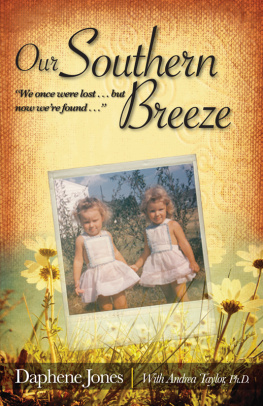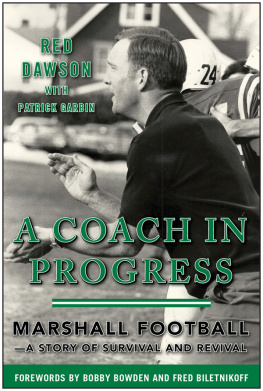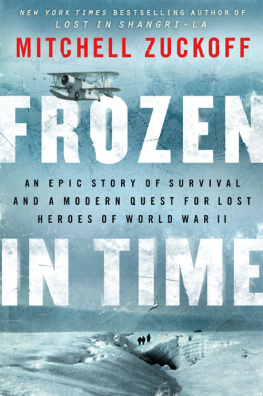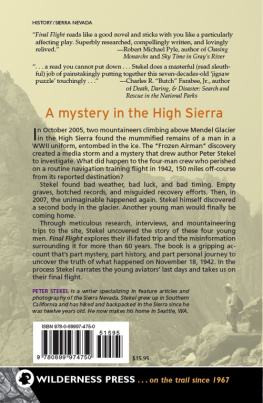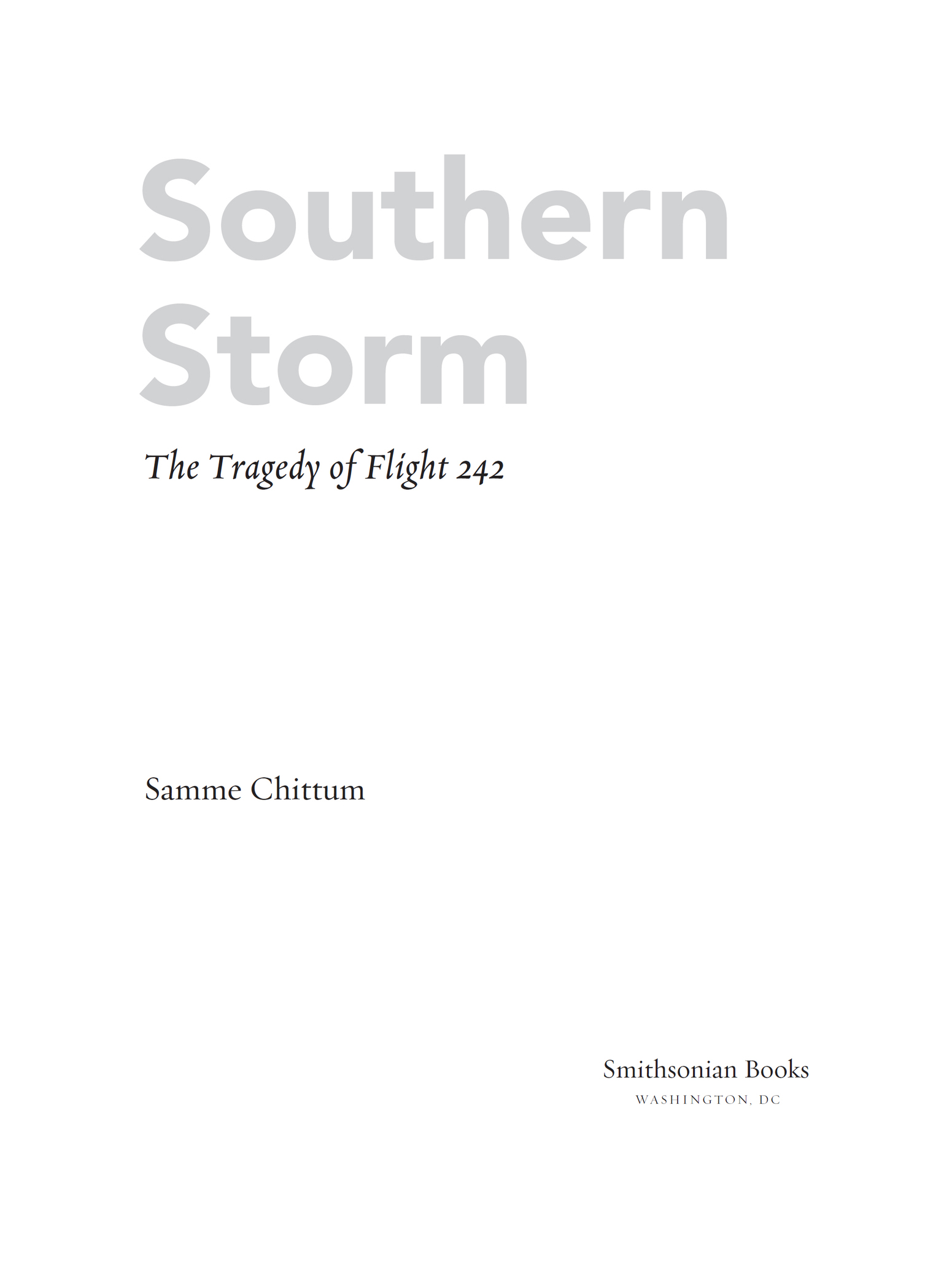Suspenseful stories of tragedy and triumph are brought to life in the Smithsonian Air Disasters television and book series through investigative reporting, official reports, and interviews with the pilots, air traffic controllers, and survivors of historys most terrifying crashes. From the cockpit to the cabin, from the control room to the crash scene, the Air Disasters series uncovers what went wrong and reveals the changes that were made to ensure such disasters never happen again.
2018 by Cineflix Media Inc. and Smithsonian Institution
All rights reserved. No part of this publication may be reproduced or transmitted in any form or by any means, electronic or mechanical, including photocopying, recording, or information storage or retrieval system, without permission in writing from the publishers.
Bad Weather on the Way
For years afterward, the scent of jet fuel and scorched hair were powerful sensory cues that transported Sadie Burkhalter Hurst back in time to the day when fire and death invaded her tranquil world. Most of the time, she said 40 years later, you dont remember it until things trigger those memories. And so many things will bring back the memories. Burning hair will just make me sick at my stomach. The emotions come back. You dont want them to, you dont ask for them, but you cant stop them. To this day I can smell the odors and I can hear the sounds. And I can see those people.
On Monday, April 4, 1977, Sadie was a young mother of three boys living in the small community of New Hope, Georgia. That lovely spring afternoon, she stood in her living room and witnessed a scene almost out of a horror film. A man was running across her front yard toward her, frantically waving his arms, his clothing ablaze. Behind him, downed electrical wires snaked around charred bodies. A traumatized young man with red hair and badly burned hands had taken refuge in the yellow Cadillac parked in Sadies driveway. Another man, engulfed in flames, was running blindly toward the creek behind her house. In the midst of it all, a shimmering blue line painted on a fragment of metal was all that remained to identify the mangled fuselage of a Southern Airways DC-9-31 passenger plane that had just crashed into the Burkhalters quiet front yard.
Every airline chooses its livery colors with care and pride. In 1977, the most distinctive feature of the official livery for the Southern Airways fleet was that cobalt-blue band, emblazoned with the companys name, which ran from the nose cone to the tail.
Before it merged with North Central Airlines in July 1979 and became part of Republic Airlines, Southern Airways was a regional carrier based in Atlanta. Its planes flew routes from Memphis south to Atlanta, New Orleans, and Jacksonville and east to Charleston, making what pilots call milk runsshort hops carrying passengers and cargo among airports large and small. By the late 1970s, most of Southerns fleet consisted of McDonnell Douglas DC-9s, designed for short- to medium-range flights between regional airports. The longer, stretched series 30 version of the DC-9 could accommodate up to 89 passengers in its single-aisle cabin. With its high T-tail, swept-back wings, and twin turbofan jet engines, the DC-9 was distinctive, powerful, and fast. It could complete 200-mile flights in less than 30 minutes, as McDonnell Douglas advertised in its DC-9 brochure, which predicted that passengers would have just enough time for a wink and blink but not enough for a nod on shorter trips.
On April 4, at 3:54 p.m., a Southern Airways DC-9-31 carrying 81 passengers and four crewmembers took off under cloudy skies and in heavy rain from Huntsville International Airport, near Huntsville, Alabama, on its way to Atlanta. Sometime after 4 p.m., as it was flying over Rome, Georgia, the aircraft entered a massive thunderstorm cell, part of a larger squall linea chain of storms that can brew up a wild and dangerous concoction of rain, hail, and lightning.
Far below to the east, in New Hope, the weather was idyllic. It was an absolutely beautiful day, recalled Sadie, who lived with her family in a brick ranch house set back from Georgia State Route 92 Spur (now Georgia State Route 381, known as the Dallas-Acworth Highway for the two cities it connects). It was blue skies, white clouds, with a slight breeze, sun shiningjust gorgeous.
There wasnt much for Sadie to do before her husband, Emory, came home for supper that evening. The house was for sale, so it was already cleaned and ready to be shown, she recounted. The one-story ranch was a wonderful place to live; the kids loved it. It had a full basement and a comfortable living room with a fireplace and a picture window that looked out over a long asphalt driveway and a front yard sheltered by tall pine trees. A creek ran behind the home, separating the Burkhalters lot from houses directly behind them. Sadie and Emory liked New Hope, too, which was small and friendly, and all their immediate neighbors. They were just sweet people, kind, caring and loving. The Burkhalters ranch house was the second home to be built on the deep, shady lot; the first house constructed on the sloping site had been much closer to the road, but a fire had destroyed it. The Burkhalters home was behind the site of that first house, set back 200 yards from the two-lane highway that ran southwest to northeast through town, past the volunteer fire station and Newmans Grocery on the west sidethe same side where the Burkhalters home sat.
The warm spring weather had lured all three Burkhalter boys outside. Stanley, 14, and Steve, 12, were riding their bicycles up and down the driveway along with Tony Clayton, the son of New Hope volunteer fire chief John Clayton, who lived nearby. Eddie, two and a half, was peddling his tricycle along, trying to keep up with the older boys.
The Burkhalters were a classic blended family. Sadie had adopted Stanley and Steve as infants during her first marriage. Stanley was fair, with red-blond hair he wore in an afro. Steve was Native American, with straight black hair and brown eyes. After Sadie had divorced and remarried, she and Emory had Eddie, a towheaded boy with green eyes. Growing up with two older brothers who were adopted was just normal, really, recalled Eddie. I didnt know any different, and neither did they. The age gap between the two older boys and Eddie created a disconnect, he said, but we were still brothers. Still fought with one another. I got pretty good at driving them crazy. As he got a bit older, he said, Id take turns sharing rooms with them. Stanley would read the Bible under a lamp on his side of the bed until after midnight most nights. Steve had a waterbed that he kept way too hot for me, and he listened to Lionel Richie on his tape deck. I could only stand so much of either situation, so Id bounce from one room to another throughout the week. For the most part, he said, we made our family work.


